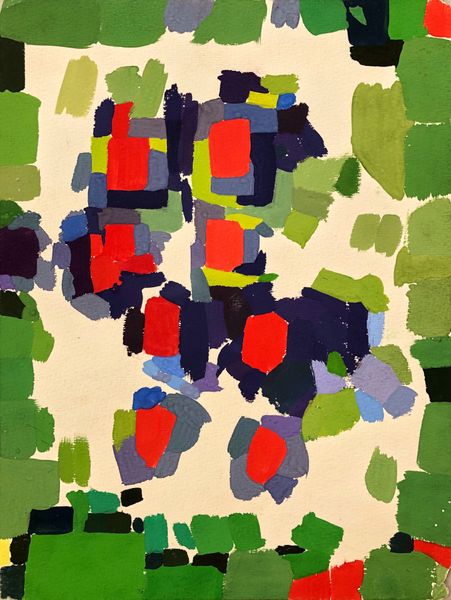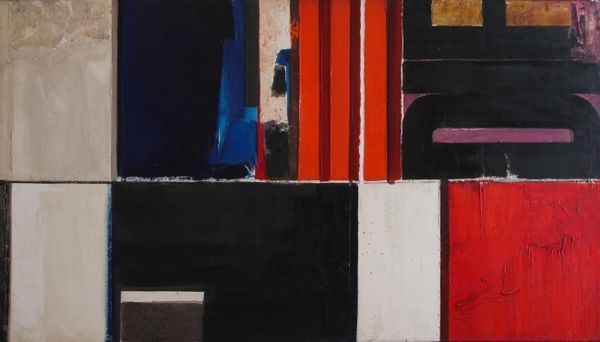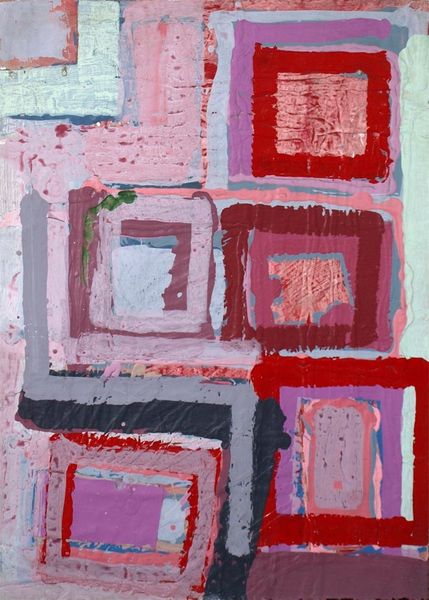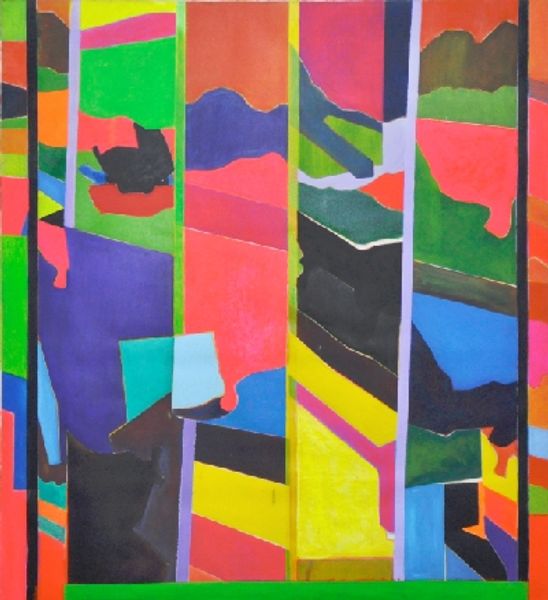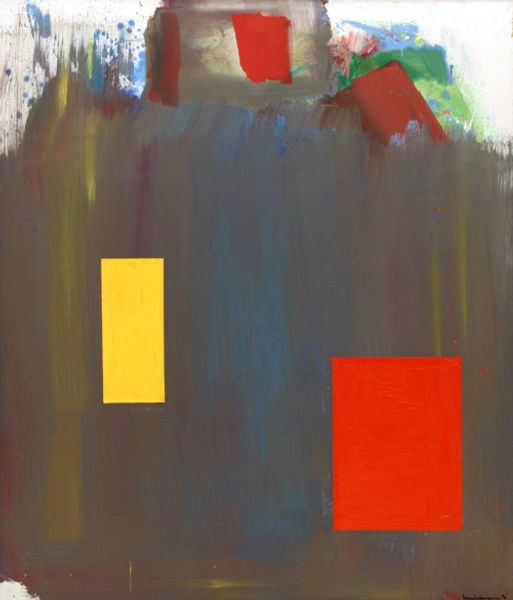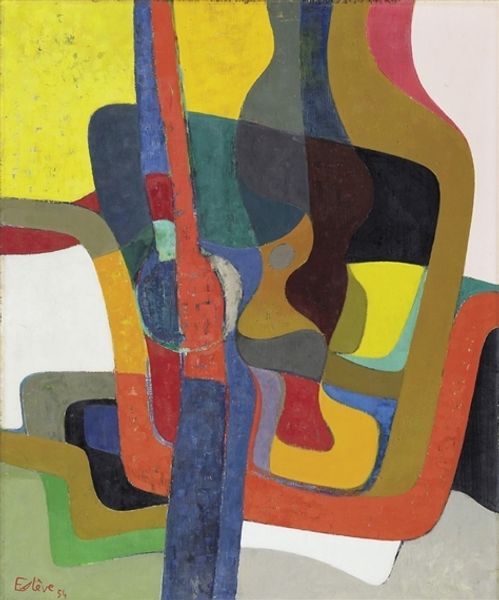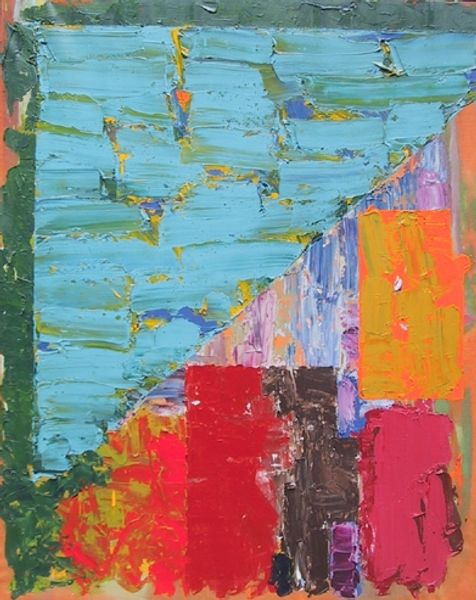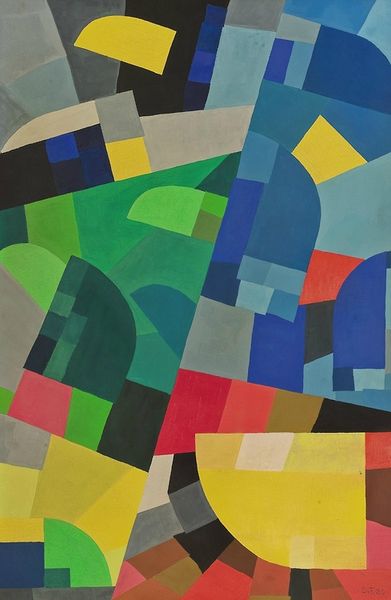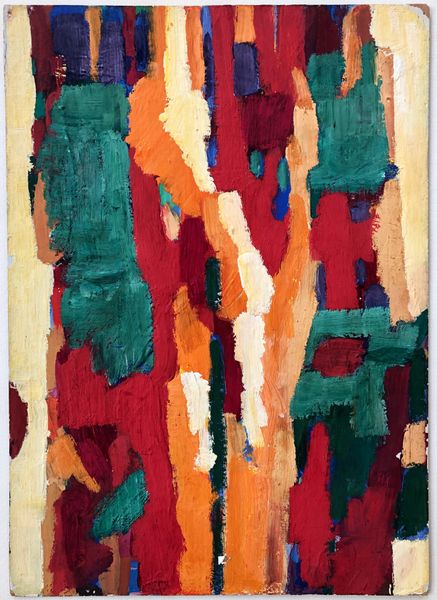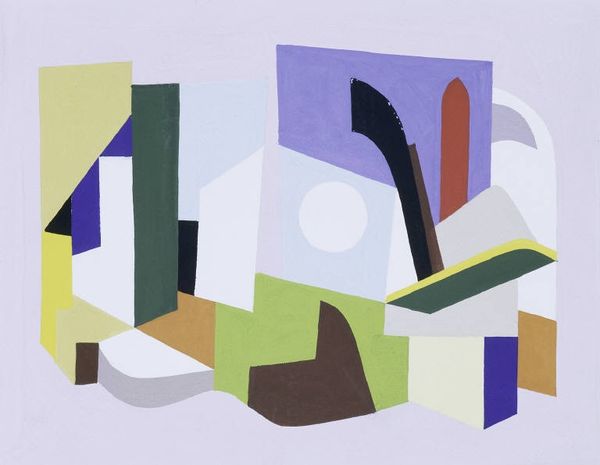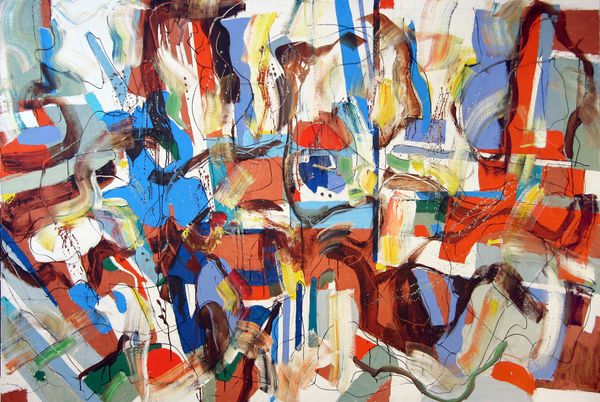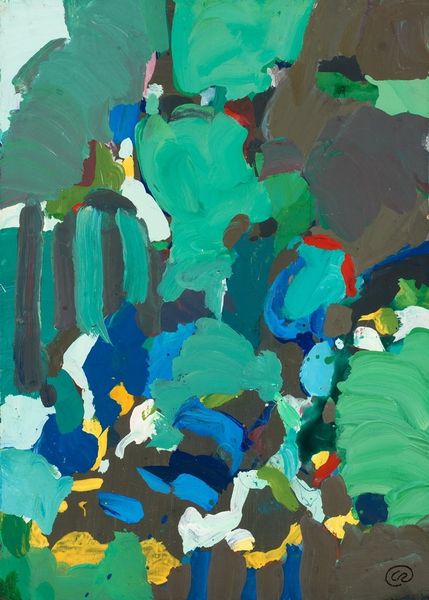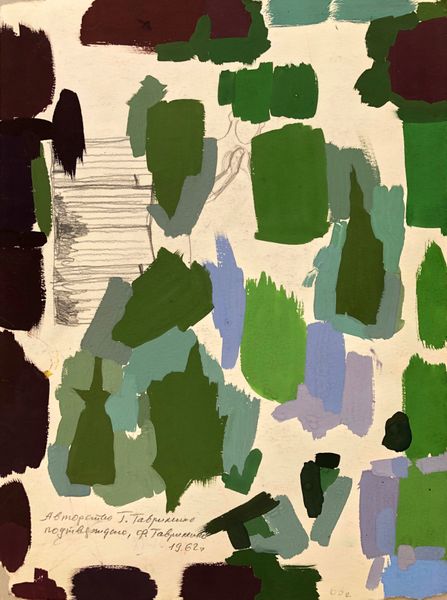
acrylic-paint
#
abstract-expressionism
#
abstract expressionism
#
acrylic-paint
#
geometric
#
abstraction
#
line
Copyright: Hryhorii Havrylenko,Fair Use
Curator: Stepping back to appreciate this compelling 1963 artwork by Hryhorii Havrylenko, titled "Composition," executed with acrylic paint. It's held in a Private Collection. What is your immediate reaction to this particular abstract piece? Editor: A puzzle! Or perhaps an aerial view of fragmented fields, if fields were coloured in blues, greys, greens, and jolted by dashes of vibrant red. There's a deliberate structure but a playful disruption, making me think about hidden symbolic meanings within the colour choices. Curator: Considering the historical setting in 1963, Havrylenko would have been creating within the rise of Abstract Expressionism, though perhaps with his own unique, regional inflection, given its provenance outside Western Europe and North America. Can we see echoes of the art world's geopolitical shifts in how abstraction was embraced differently across contexts? Editor: Absolutely, abstract forms provided a universal visual language. Notice the almost childlike forms, not simple, but familiar, as if we are all accessing a collective memory through geometry and bold primary hues. Red as passion? Red as a warning sign? The juxtaposition creates narrative possibilities. Curator: And thinking about the context of artistic expression, Havrylenko's choice of acrylic, rather than traditional oils, could have signaled a modernizing force, influenced by broader cultural shifts toward mass production and consumer culture within the art world. Was he positioning himself as part of an artistic avant-garde? Editor: Precisely! By abandoning identifiable imagery, "Composition" becomes a sign in itself— a symbol pointing towards a collective desire to break from prescribed societal molds and to question norms. I wonder how contemporaries saw these choices, particularly in light of Cold War tensions. Were abstract shapes coded critiques? Curator: It highlights how the social climate can penetrate the most "abstract" aesthetic decisions, turning art into silent dialogues with power. A fascinating piece to analyze the intersections of political consciousness and abstract art movements. Editor: Yes, leaving us to decode these fields of color for hidden cultural messages, reminding us of the ever-present interplay between artistic intent and how we interpret. A dense and multilayered piece, despite its deceptive visual simplicity.
Comments
No comments
Be the first to comment and join the conversation on the ultimate creative platform.
